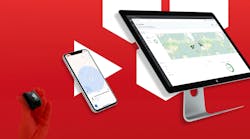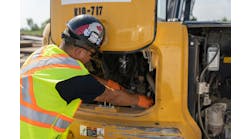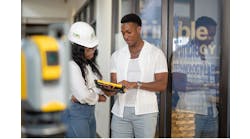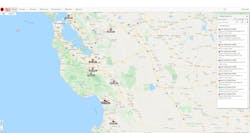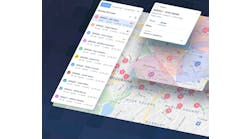David Swan, senior vice president Products, Trackunit, talks about managing by sites rather than by assets, improving tool-management efficiencies, change through deployment of connectivity and digital solutions, and more.
RER: What have been the most important achievements in your telematics systems in the past year?
Swan: We’ve recently launched a new capability called Sites. This is a feature that allows customers to make a construction site, a rental depot, or a logistics center sit at the core of their connectivity software.
The construction industry and construction rental truly operate around the productivity, efficiency and profitability of different types of sites. It’s an important step to have a connectivity solution that mirrors that thinking.
Practically this means that users in Trackunit’s software suite are now able to manage assets by site, report on utilization by site, group units by site. It allows the user to define an important geographic area and then drive insights and actions based on what happens within that area.
A useful way to think about this is: traditionally in telematics we asked the question: what assets are you interested in knowing about (select a group of units, produce insights) whereas Sites lets us start by asking what sites are important to your business, and then automatically see whatever assets are related to that site.
One of most important achievements has been our move towards an extendable platform strategy and solution. This approach helps us to facilitate the creation of a broad array of software solutions for the construction industry. The Trackunit IRIS platform has been positioned to work as the scalable and secure foundation for different parties in industry to build their solutions on top of.
This is an important capability for the industry because of the wide variety of business models, processes and the need to digitize these unique processes to capitalize on the now wide availability of asset connectivity.
You can see this platform strategy and solution in action in our recently launched Marketplace, where Trackunit platform customers are able to access numerous apps such as ISO feed configuration apps from specific OEMS on demand, and choose and utilize the apps that are most relevant to their business.
What have been the most important advancements in capabilities, enabling rental companies to improve efficiencies?
Swan: One area where we see entire new categories of efficiencies is in hand tool and small attachment connectivity. Over the past two years we’ve seen many rental companies roll out pilot projects utilizing Trackunit KIN devices, as well as built-in connectivity capabilities from major tool manufacturers that are partnering with Trackunit to make tool data available on the IRIS platform.
These smaller asset categories represent a massive opportunity for efficiencies and greater productivity in construction and construction rental. Although the cost per asset is a fraction of larger powered machinery, time and resources spent managing these smaller high-volume categories is significant. Replacing lost or stolen tools cost the industry one-third of the total annual spend on small tools.
I’m sure you keep your eye on telematics development in other industries. What are some of the developments or trends in telematics that you’ve noticed in other industries that you admire, whether or not they are relevant to the rental industry?
Swan: I love to see work being done in precision agriculture through advanced asset connectivity. It shows how powerful and meaningful digitization can be when the job is very well defined and understood.
Thinking about the advancements made in seeding efficiency using super precise RTK GPS solutions (for example) brings me back to the thought that when we provide an extendable platform and then invite the industry to come in and create, there is this incredible opportunity to really zero in on the thousands of unique processes and challenges in our industry that can be revolutionized through the right deployment of connectivity and digital solutions.
It seems there is a lot of discussion about artificial intelligence these days. Is AI relevant to the world of telematics in relation to the rental industry?
Swan: One thing that has become clear over the past year is that AI will impact almost every sector. One area where we’ve already started to see the impact of AI is through machine learning applications. It’s well known that many of the OEMs that supply construction rental are pursuing and very interested in the idea of true predictive maintenance which relies on advanced machine learning methods, combined with a rich enough data set delivered through telematics to model scenarios and identify them before they impact rental and contractor business.
Anything you’d like to add?
Swan: We are heading into a 5G connectivity environment, which combined with higher capability Bluetooth will continue to expand the data connectivity across sites creating opportunities to gather more data, create more insights and improve productivity and safety.
